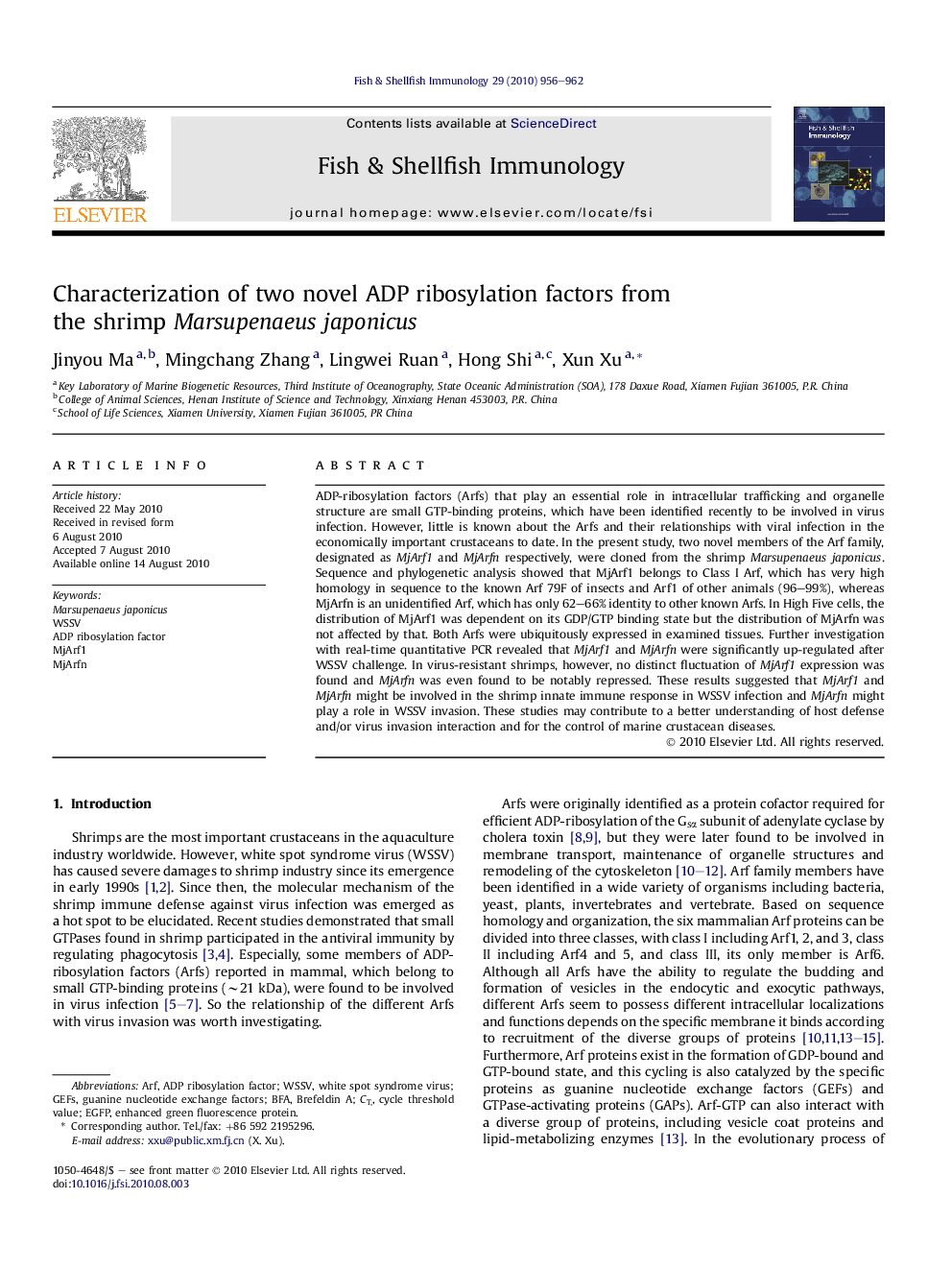| Article ID | Journal | Published Year | Pages | File Type |
|---|---|---|---|---|
| 2432520 | Fish & Shellfish Immunology | 2010 | 7 Pages |
ADP-ribosylation factors (Arfs) that play an essential role in intracellular trafficking and organelle structure are small GTP-binding proteins, which have been identified recently to be involved in virus infection. However, little is known about the Arfs and their relationships with viral infection in the economically important crustaceans to date. In the present study, two novel members of the Arf family, designated as MjArf1 and MjArfn respectively, were cloned from the shrimp Marsupenaeus japonicus. Sequence and phylogenetic analysis showed that MjArf1 belongs to Class I Arf, which has very high homology in sequence to the known Arf 79F of insects and Arf1 of other animals (96–99%), whereas MjArfn is an unidentified Arf, which has only 62–66% identity to other known Arfs. In High Five cells, the distribution of MjArf1 was dependent on its GDP/GTP binding state but the distribution of MjArfn was not affected by that. Both Arfs were ubiquitously expressed in examined tissues. Further investigation with real-time quantitative PCR revealed that MjArf1 and MjArfn were significantly up-regulated after WSSV challenge. In virus-resistant shrimps, however, no distinct fluctuation of MjArf1 expression was found and MjArfn was even found to be notably repressed. These results suggested that MjArf1 and MjArfn might be involved in the shrimp innate immune response in WSSV infection and MjArfn might play a role in WSSV invasion. These studies may contribute to a better understanding of host defense and/or virus invasion interaction and for the control of marine crustacean diseases.
